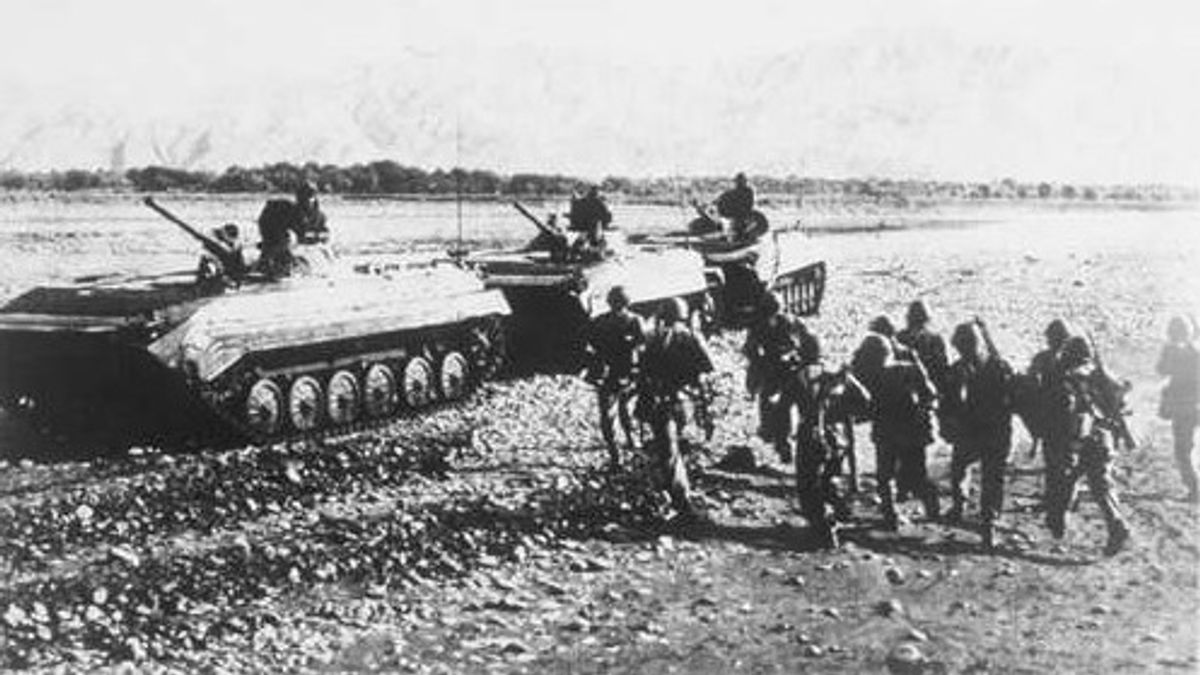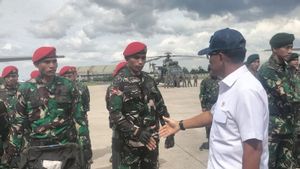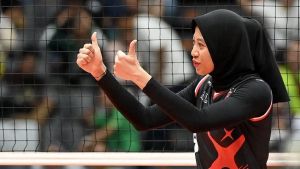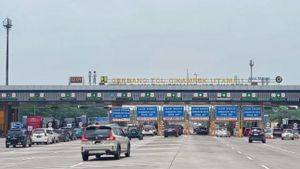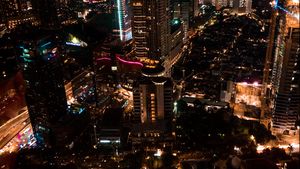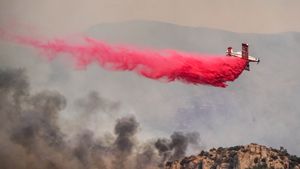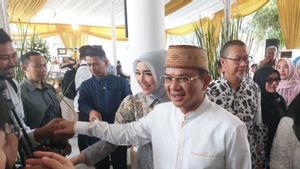JAKARTA - From time immemorial, Afghanistan and Russia are close friends. When these two countries were both monarchies, the relationship was well preserved. Entering the turn of time, the relationship between the two countries has experienced many dynamics.
While Tsar Nicolas II competed with Britain for territorial expansion, the kingdom of Afghanistan was already an ally of Tsarist Russia. Good relations continued during the Soviet Union. At that time, the Soviet Union affirmed their relative security through the aid of millions of rubles of gold, weapons, ammunition, and military training for Afghanistan.
The ripples of division between the two countries began with the collapse of the Kingdom of Afghanistan as a result of the coup carried out by Mohammad Daoud. He accused King Zahir - who was then in power - of corruption. At that time, King Zahir was also considered to have failed to improve Afghanistan's economy. All these pressures finally pushed King Zahir to give up his power on July 17, 1973.
Mohammad Daoud rose to power. Mohammad Daoud's first major step was to dissolve the monarchy and replace it with a republican system. Mohammad Daoud has the ambition to reform Afghanistan by opening the tap for freedom of politics, of opinion, of organizing and cultivating various ideologies of life in Afghanistan.
Unfortunately, this freedom actually triggered the fall of Mohammad Daoud's own power. He is considered to have failed to reform Afghanistan. A wave of protests emerged in the community. The protests were massively staged by the People's Democratic Party of Afghanistan with the communist ideology. In April 1978, Mohammad Daoud was ousted from power. In fact, he and his entire family were sentenced to death.
Following the overthrow of Mohammad Daoud, Secretary of the Afghan Democratic Party Muhammad Taraki ran as President of the Revolutionary Council of the Democratic Republic of Afghanistan with Hafizullah Amin as his representative. During his leadership, Taraki's communist regime implemented a Soviet-style revolution program.

Taraki's revolutionary pace led to resistance from conservative Muslim circles who were members of the Mujahideen group. They consider the revolutionary road to be against Islam. Then, in 1978, the Mujahideen started a rebellion in the Nuristan region. Civil war was inevitable. The divisions between the pro-Taraki and pro-Mujahidin groups spread throughout Afghanistan.
Unfortunately, Taraki's representative, Hafizullah Amin, tried to take advantage of this condition to seize power from Taraki by supporting and exploiting the Mujahid group. It was Hafizullah who asked for help from the United States under the pretext of stopping the communist domination in Afghanistan.
The Americans responded quickly to Hafizullah's request for help. On July 3, 1979, President Jimmy Carter signed a CIA operating order to fight the communist regime and assist Hafizullah in Afghanistan. Assistance was provided in the form of money and supplies of weapons to Mujahidin groups. Not only that. Hafizullah also drew strength from Pakistan and Saudi Arabia.
With that much power, the conflict widened. It was noted that 24 of the 28 provinces were hit by chaos due to the rebellion of the Mujahidin group. They succeeded in slaughtering about a hundred Taraki-supporting Soviet Union military advisers. On September 14, 1979, Taraki was assassinated. The perpetrator of the murder, suspected to have been ordered by Hafizullah, smothered Taraki with a pillow when he fell asleep.
After the power he held. Hafizullah Amin devised a plan to get rid of all his enemies, including those loyal to the Soviet Union. Seeing Hafizullah Amin's betrayal, the People's Democratic Party of Afghanistan then launched a counter-insurgency by asking the Soviet Union for help. The aid came in the form of paratroopers who began landing in Kabul on 23 December 1979.
Entered the cold war
Subsequently, the Soviet Union launched Operation Hurricane 333 by deploying its troops to Kabul. The large-scale force includes 280 warplanes and three army groups, totaling about 8,500 troops. The People's Democratic Party of Afghanistan also mobilized mass force in the rebellion. The spirit of the rebellion was to overthrow Hafizullah Amin in order to restore Afghanistan's rule under the ideology of communism.
This operation was successful despite facing fierce resistance from government groups and Muhajidih. Several days against each other, the Soviet Union managed to take control of the capital city of Kabul and arrested Hafizullah Amin. Like his predecessor, Mohammad Daoud, Hafizullah Amin was also executed. On December 28, 1979, the Central Committee for the Afghan Revolution executed him. This committee also later appointed Babrak Karmal, a loyalist of the Soviet Union, as the new head of government.
To strengthen its position, the Soviet Union sent additional troops back through northern Afghanistan. Meanwhile, the Mujahideen began to launch new strategies and attacks. Meanwhile, the Mujahideen continued to fight back by implementing a guerrilla strategy. They attacked quickly, then returned to the mountain.

For Mujahidin, the Soviet Union was a foreigner who had to be expelled. They even proclaimed holy war against the Soviet Union in order to attract support from neighboring countries in the Middle East. During the USSR's occupation of Afghanistan, the role of the United States continued. They were the ones who provided weapons, ammunition to anti-aircraft missiles to the Mujahideen forces. This missile was successfully used by the Mujahideen to shoot down fighter planes of the Soviet Union.
The Afghanistan war which lasted for decades was a form of cold war between the Soviet Union and the United States as two competing superpowers after the second world war. The United States as the leader of the Western Bloc and the Soviet Union as the leader of the Eastern Bloc.
Peace efforts
In November 1986, Muhammad Najibullah emerged in response to peace. The Afghan Police Chief was elected president. From his position, Muhammad Najibullah tried hard to solve the ongoing civil war. At that time, the Soviet Union no longer provided assistance in the form of soldiers, but only economic assistance. Meanwhile, the United States, which collaborates with Pakistan, has also not stopped supporting the Mujahideen group.
Muhammad Najibullah himself tried to build support for his government through reforms. The Afghan government under Muhammad Najibullah immediately carried out national reconciliation by distancing itself from socialism in order to realize Afghan nationalism. Muhammad Najibullah's government also abolished one-party domination and allowed non-communists to join the government.
Dialogue was opened between the Mujahideen and other groups. Afghanistan has also made Islam its official religion. In addition, all references to communism were removed. All these steps succeeded in reducing the influence of the Soviet Union in the Afghan government. However, this move did not necessarily attract the sympathy of the Mujahideen to Muhammad Najibullah's regime.
This invasion of Afghanistan was the first time the Soviet Union carried out outside the Eastern Bloc. This occupation of Afghanistan ended in 1989, when the Soviet Union was led by Mikhail Gorbachev. The Soviet Union began withdrawing their troops on May 15, 1988. The last Soviet Union troops left Afghanistan in February 1989.
The end of the Afghanistan war caused the Soviet Union to suffer losses, such as 15,000 soldiers were killed, enormous financial losses for the country, and one of the causes of the collapse of the Soviet Union in 1991.
The English, Chinese, Japanese, Arabic, and French versions are automatically generated by the AI. So there may still be inaccuracies in translating, please always see Indonesian as our main language. (system supported by DigitalSiber.id)
